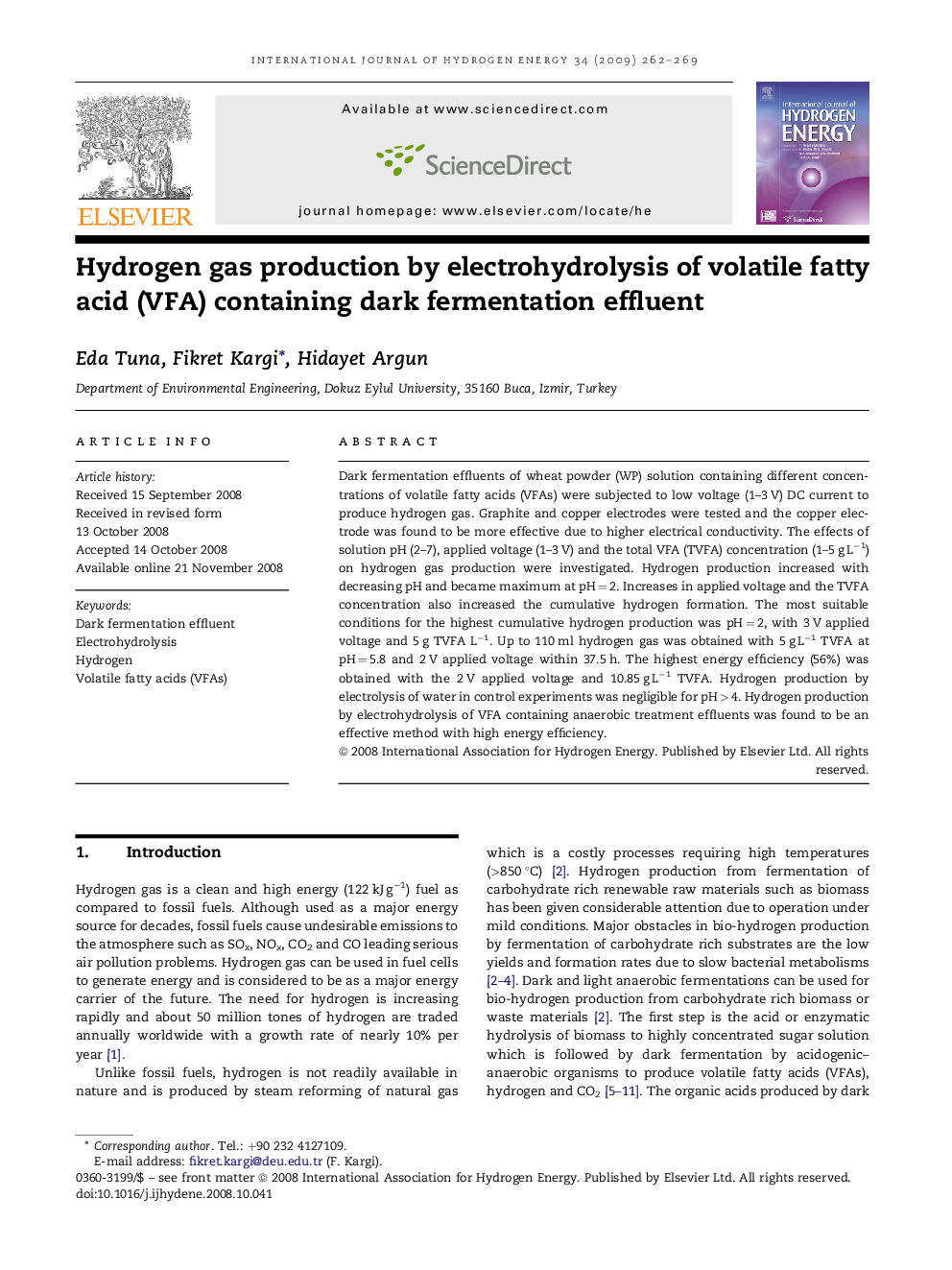| Article ID | Journal | Published Year | Pages | File Type |
|---|---|---|---|---|
| 1278071 | International Journal of Hydrogen Energy | 2009 | 8 Pages |
Dark fermentation effluents of wheat powder (WP) solution containing different concentrations of volatile fatty acids (VFAs) were subjected to low voltage (1–3 V) DC current to produce hydrogen gas. Graphite and copper electrodes were tested and the copper electrode was found to be more effective due to higher electrical conductivity. The effects of solution pH (2–7), applied voltage (1–3 V) and the total VFA (TVFA) concentration (1–5 g L−1) on hydrogen gas production were investigated. Hydrogen production increased with decreasing pH and became maximum at pH = 2. Increases in applied voltage and the TVFA concentration also increased the cumulative hydrogen formation. The most suitable conditions for the highest cumulative hydrogen production was pH = 2, with 3 V applied voltage and 5 g TVFA L−1. Up to 110 ml hydrogen gas was obtained with 5 g L−1 TVFA at pH = 5.8 and 2 V applied voltage within 37.5 h. The highest energy efficiency (56%) was obtained with the 2 V applied voltage and 10.85 g L−1 TVFA. Hydrogen production by electrolysis of water in control experiments was negligible for pH > 4. Hydrogen production by electrohydrolysis of VFA containing anaerobic treatment effluents was found to be an effective method with high energy efficiency.
